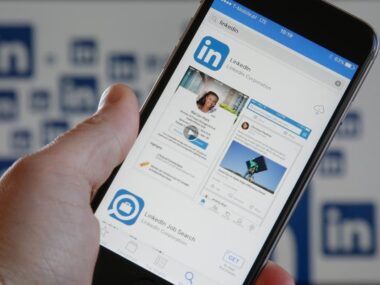Facing rejection can feel discouraging, but it often holds the key to personal growth and unexpected success. Learning how to transform setbacks into stepping stones can empower you to unlock new possibilities. Instead of viewing a no as an endpoint, embracing it as a valuable lesson can help you build resilience and sharpen your approach.
This mindset shift is essential for anyone seeking progress in their personal or professional life. Turning rejection into opportunity how to use no to fuel your next yes is about harnessing the power of perseverance and insight to achieve your goals with greater determination and clarity.
Why Rejection is a Stepping Stone, Not a Dead End
Rejection is part of life, especially in careers. Whether it’s a job application, a promotion, or a business pitch, hearing no can feel discouraging. But the most successful people see rejection differently not as failure, but as a stepping stone to better opportunities. Each rejection provides valuable insights, helping you refine your skills and approach. Instead of letting it bring you down, use it as motivation to improve. Many of the world’s top achievers faced countless rejections before their breakthroughs. By shifting your perspective, you turn rejection into a tool for growth. The key is learning from each setback, adjusting your strategy, and staying persistent. Every no brings you one step closer to the right yes.

- Everyone faces rejection, but successful people use it as a tool for growth.
- A ‘no’ today can lead to a better ‘yes’ tomorrow if you know how to respond to it.
- The right mindset shifts and actions can turn rejection into your biggest advantage.
Read: How to Leverage Canada’s Provincial Nominee Program to Fast-Track Your Employment
Shift Your Mindset: Seeing Rejection as Redirection
Rejection often feels personal, but it’s not. It’s a sign that something needs adjustment either your skills, approach, or even your career path. Many successful people look back and realize that past rejections actually led them to better opportunities. When you see rejection as redirection, it becomes easier to move forward. Instead of asking, Why me? ask, What can I learn from this? Sometimes, a no means you weren’t the right fit for that role, but it could also mean something better is ahead. Train yourself to view rejection as feedback, not failure. Stay open-minded, keep improving, and trust that every closed door is guiding you toward the right one.
- Rejection isn’t a personal failure it’s information.
- Each ‘no’ brings you closer to the right opportunity.
- How top professionals, CEOs, and entrepreneurs use rejection as a learning tool.
How to Handle Job Rejection Without Losing Confidence
Job rejection can feel like a personal blow, but it’s important to separate emotions from reality. Even the most qualified candidates face rejection it’s not always about your skills, but sometimes about timing, competition, or company needs. Instead of letting it shake your confidence, use it as fuel for growth. Take a short break if needed, but don’t dwell on it. Remind yourself of your strengths, revisit your career goals, and keep moving forward. Some of the most successful professionals faced multiple job rejections before landing the right opportunity. Confidence comes from persistence. If one door closes, another one opens sometimes in places you least expect. Keep applying, keep networking, and trust your journey.
- Take a step back and separate emotions from facts.
- Don’t dwell use the rejection as motivation to improve.
- Real stories of successful people who turned rejection into career breakthroughs.
Decode the Feedback: What Rejection is Trying to Tell You
Every rejection carries a lesson, but only if you take the time to analyze it. If a company provides feedback, use it to identify areas for improvement. Maybe your resume needs a stronger impact, or your interview responses need more clarity. If you don’t receive feedback, don’t be afraid to ask many recruiters are willing to offer insights. Pay attention to patterns in multiple rejections. Are you struggling with technical questions? Do you need more experience in a specific skill? Recognizing these patterns helps you make strategic changes. Instead of seeing rejection as an endpoint, treat it as valuable guidance that brings you closer to success. The more you learn, the stronger your next application will be.

- If you received feedback, analyze it objectively.
- If no feedback was given, how to ask for it the right way.
- How to spot patterns in multiple rejections and adjust your approach.
Read: The Impact of Canada’s Aging Population on Job Opportunities—Why Your Skills Are Needed Now
Upgrade Your Approach: Turning Weaknesses into Strengths
If rejection is becoming a pattern, it may be time to refine your strategy. Start with your resume does it clearly highlight your strengths? Tailor it for each role to increase your chances. Next, assess your interview skills. Are you presenting yourself confidently? Practicing with a mentor or recording your responses can help identify weak areas. Another powerful approach is networking many job opportunities come through connections rather than applications. If you’re lacking experience in certain areas, consider online courses, certifications, or freelance projects to build credibility. Every rejection gives you a chance to improve. Instead of taking it personally, use it as motivation to sharpen your skills and enhance your job search strategy.
- How to refine your resume and cover letter for better results.
- How to improve interview performance with better preparation and self awareness.
- Why networking and mentorship can open doors rejection couldn’t.
Taking Action: Moving Forward After a No
After rejection, it’s easy to feel stuck. But the key to success is taking action. Start by reflecting on what you’ve learned did you identify areas for improvement? Update your resume, refine your interview technique, or expand your skill set. Keep applying, even when it feels discouraging. Rejection is part of the process, but persistence sets successful people apart. Stay proactive by networking, attending industry events, and connecting with mentors. The more you put yourself out there, the more opportunities will come your way. Remember, rejection doesn’t define you your response to it does. Keep pushing forward, stay adaptable, and trust that your hard work will pay off in the right opportunity.
- Create an action plan based on what you’ve learned.
- How to stay motivated and resilient through continued setbacks.
- Why persistence beats perfection in achieving career success.
Every No is a Step Toward Your Next Yes
Rejection isn’t an obstacle it’s a stepping stone. Every no provides a chance to learn, improve, and grow. The most successful people use rejection as motivation, refining their skills until the right opportunity comes. Instead of seeing rejection as a failure, view it as feedback guiding you toward success. Stay persistent, trust the process, and keep taking action. The right opportunity might not come immediately, but each setback brings you closer to it. Keep believing in yourself, stay adaptable, and remember every rejection is just a redirection to something better. Stay focused, keep improving, and your next yes will come sooner than you think.

- Rejection isn’t an end; it’s a tool for growth.
- Keep learning, keep improving, and keep going.
- The best opportunities often come after the toughest rejections.
Read: How to Stand Out in the Canadian Job Market—Expert Tips for Crafting the Perfect Resume
Rejection is not the end but a chance to grow and improve. Instead of seeing it as failure, view it as redirection toward better opportunities. Analyze feedback, refine your skills, and adjust your approach to increase your chances of success. Many successful individuals faced multiple rejections before achieving their goals, proving that persistence and adaptability are key. Every no is a learning experience that brings you closer to the right yes.


